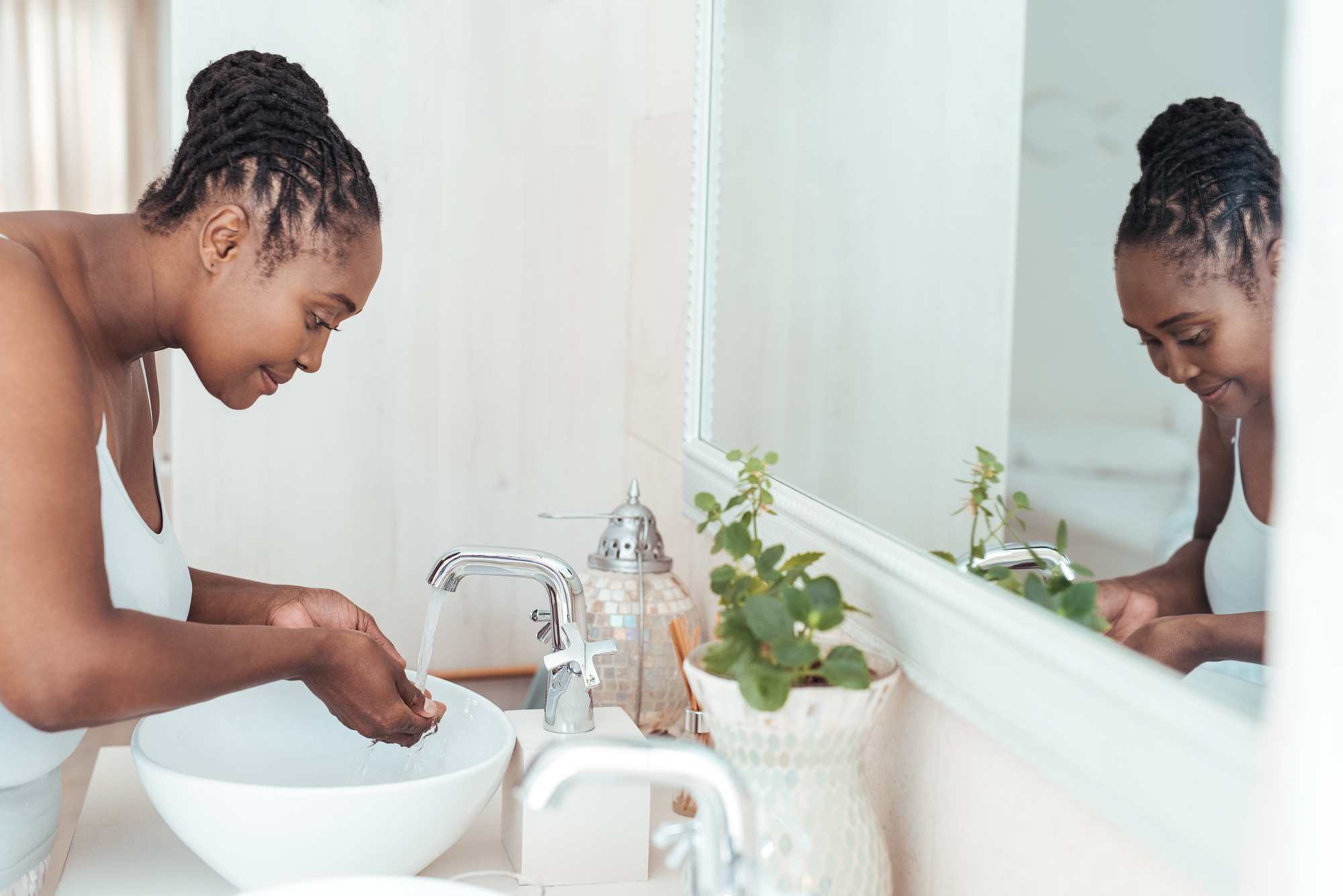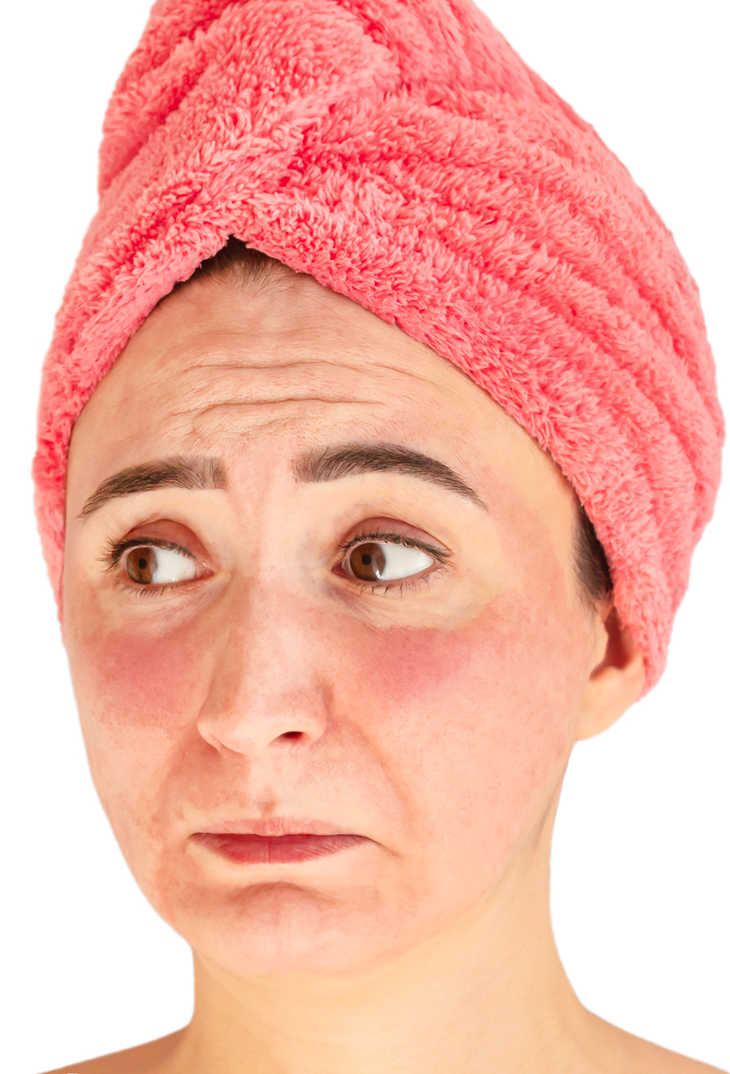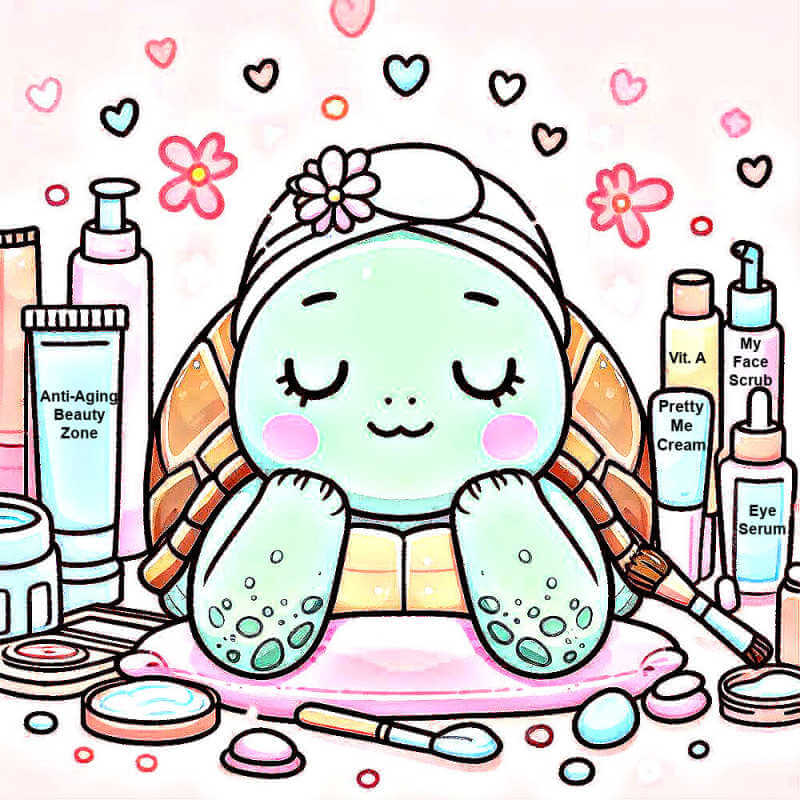As an Amazon Associate, I earn from qualifying purchases and other affiliate links. I only recommend products I’ve tried or researched.
- Home
- Troubled Skin
- Flushed Face
- Slugging for Rosacea
Slugging for Rosacea: Is This Moisture-Boosting Trend Right for You?
by: Linda Robison / Facial Fitness Specialist
This TikTok trend may not be for everyone. What is it? What are the downsides, who should NOT do it, and what you need to know.
Is slugging for rosacea a good idea? It depends on what type of rosacea you have. We'll cover all the details and help you decide if this Korean skincare trend can help you manage your rosacea symptoms.
I'm here to guide you through a cost-effective, easy-to-follow method known as slugging for rosacea. Let's dive right in! 😊
What is slugging for rosacea?
Let's start by unraveling the basics. What is slugging? 🐌
Essentially, it involves applying a thick layer of petroleum jelly over your face at night before going to bed to seal in moisture and maintain hydration overnight.
Note: Why the name slugging? Because after you apply the jelly, your face has a shiny, slimy look, just like a garden slug's path. That's why they call it slugging. 😊
The name isn't so appealing, yes, but it's not as disgusting as it sounds, and the benefits might just surprise you.
Rosacea and Slugging
Rosacea is a pretty complex disorder with various subtypes and symptoms that can vary widely among individuals. However, if your main symptoms are flaking, irritation and sensitivity due to excess dryness, slugging might be for you!
Why?
Because slugging creates a barrier over your face to prevent water loss. It acts as your skin’s own moisture barrier, helping to minimize dryness and flaking, leaving your face with a dewy glow in the morning.
Older people with rosacea often have dry, rough skin. This is because it can weaken the skin barrier, making it more susceptible to water loss. And, skin naturally becomes thinner and drier as we age.
How can slugging help with rosacea symptoms
Here are a few ways slugging can help manage the discomfort of rosacea.
Moisture Retention: Many people with rosacea have issues with dry, flaky or overly sensitive skin. Applying a thin layer of petroleum jelly on clean skin can help lock moisture and prevent dehydration.
Barrier Protection: The jelly like layer formed by slugging can act as a barrier between your skin and irritants. Some people say their face feels less irritated, calmer, with less redness.
Reduced Sensitivity: For some, hydrated skin feels less oversensitive and may be prone to less flareups.
Now, slugging might not be the magical solution for everyone. It's important to listen to your skin's needs and understand that not all skin types or conditions might react positively to this trend.
How to do slugging for rosacea on the face
Important Note before slugging:
- Slugging is usually done at night. This give the petroleum jelly product time to work the skin while you sleep.
- You must start with a clean face. It's not recommended to put apply the petroleum jelly or any thick ointment, on top of rosacea medication or skincare products with active ingredients like retinols or alpha hydroxy acids because it traps the product and may cause irritation.

Step-by-Step Guide for Slugging with Rosacea
- At night, use a mild, non-abrasive cleanser to wash your face. Avoid aggressively rubbing your face as it can increase redness.
- Once your face is cleaned and lightly dried, use clean hands to apply a small layer of petroleum jelly or ointment of choice. We'll discuss different choices below.
- Be careful not to get the ointment too close to the eye area! Because it will migrate into your eyes while you sleep. Then you'll wind up with puffy, irritated eyes in the morning. Not fun to deal with in the morning. 😒
- Wait a few minutes before going to bed to allow the ointment to settle in. And, before going to bed, consider placing a clean towel over your pillow, so it won't get grease stains.
- You also might want to pull your hair back away from your face, if you don't want to wake up with greasy hair.
- In the morning, make sure to wash your face to remove all traces of the jelly. Then apply your usual morning skincare routine.
How often should you do slugging?
That depends on your personal needs, you are the best judge of this. It's important to listen to your skin and watch how it reacts.
Once or twice a week is the norm. More might be needed during cold, dry weather.
What type of rosacea should NOT do slugging?

Slugging is NOT appropriate for all types of rosacea, especially those with specific symptoms listed here:
- Pus-filled bumps or pustules. Ointments can trap moisture and cause the pustules inflamed.
- Rhinophym or thickening of the skin. Slugging may encourage thickness and cause discomfort.
- Trigger induced rosacea. If your symptoms are triggered by certain factors like heat, spicy foods, or alcohol, slugging can make it worse.
- Open lesions, sores or broken skin. Never apply petroleum jelly to open wounds.
- Acne, clogged pore, blackheads, or excess oil. If you have any of these issue, this trend isn't for you.
In summary, while slugging can be beneficial for some individuals with rosacea, it's not suitable for all types and situations. If in doubt, try a small patch test first. Or ask your dermatologist.
Related: Slugging helps dry skin issues after exfoliating peels.
Pros and cons of slugging for rosacea
PROS:
Locks in moisture. May help provide relief for those suffering from dry, flaky burning, irritated or stinging complexion due to rosacea.
It's cost-effective since petroleum jelly is inexpensive and only a small amount is need for positive results.
Can make your complexion look plumper and younger.
CONS:
One of the potential drawbacks of slugging is that it can feel quite heavy and greasy on the skin. This could make you uncomfortable, especially if you're not used to wearing heavy products during sleep.
Personally, I couldn't handle it. Any piece of fuzzy or hair from my bedding or my pets would stick to my face and made me itch all night.
Also, some people might be sensitive or have special allergies that might react negatively to petroleum jelly based products.
What products should you use for slugging?
Any ointment type product can be used for slugging. However, personal preferences usually dictate which one you'll feel comfortable using.
Here are some common ones used:
Is Aquaphor good for rosacea?
Yes, Aquaphor is one of the most popular ointment used for slugging. It not only acts like regular petroleum jelly but also has added ingredients like Glycerin and Panthenol which help hydrate and soothe the skin. It also contains Bisabolol, which is known for its skin calming properties. So, Aquaphor could be beneficial for your rosacea skin.
What about petroleum jelly?
Yes, good old fashion Vaseline (petroleum jelly) works well too. It doesn't have the added ingredients like Aquaphor which might helps sooth inflammation, but it's very inexpensive.
It's important to listen to your skin. If you start noticing any discomfort, stop using the product.
Final take away about slugging for rosacea
In conclusion, slugging could be a beneficial and cost-effective way to manage, hydrate and soothe rosacea's dryness.
It might be especially helpful for older people with rosacea due to reduced oil production, which can make them more susceptible to dry skin.
But, it is NOT for all rosacea suffers. If you're not sure if this is right for you, review the "What type of rosacea should NOT do slugging?" section above.
And, it can make symptoms worse for some. So please keep that in mind. If in doubt, do a small patch test or check with your dermatologist. Especially if you have any issues with your slugging routine.
So, are you ready to slug your way to better hydrated, smoother skin? Let's nail that #SlugLife! 🐌💦
Q: Is aquaphor good for rosacea?
Q: Is aquaphor good for rosacea?
A: Yes, like petroleum jelly, Aquaphor creates a protective barrier to help hydrate and heal the skin.
Q: What about slugging if I have Ppapulopustular Rosales?
Q: What about slugging if I have Ppapulopustular Rosales?
A: Papulopustular rosacea looks like acne. But it's a type of rosacea characterized by redness, pimples, and pustules on the face. No, slugging is not a good idea for this condition. Always check with your dermatologist.
Q: Does Vaseline help rosacea?
Q: Does Vaseline help rosacea?
A: Applying any petroleum jelly product, like Vaseline, on your skin at night can help with dry skin and flaking from rosacea. But it won't cure it. There's no cure for rosacea, only are treatments to control the symptoms.
About the Author:
Linda Robison is a Facial Fitness Specialist and the founder of Anti-Aging Beauty Zone. With decades of hands-on experience, she shares practical, natural ways to lift and brighten mature skin—without expensive or invasive treatments.
Before you go ....
Please tap on the💙in the bottom right corner if you found this page helpful.
FOLLOW ME FOR MORE TIPS:
SHARE OR SAVE FOR LATER:

